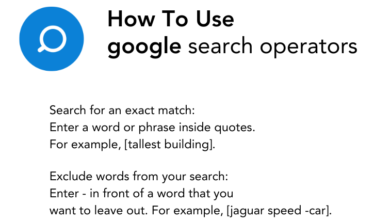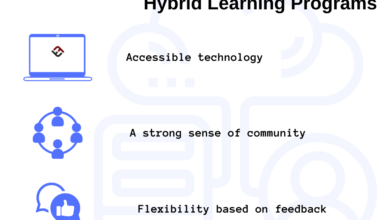On The Danger Of Popular Ideas In Education –

by Terrell Heick
More than once, I’ve seen Bloom’s Taxonomy called a ‘fad.’
This can be lumped in with Charlotte Danielson’s DOK framework and Learning Styles, eLearning, Blended Learning, MOOCs, Common Core academic standards, and a few dozen other practices, ideas, and programs–each as a fad. Something that, for a while, is ‘popular.’
And sometimes, this is true.
Oxford defines a fad as “A short-term obsession with a style, product, idea, or concept. Fads are characterized by high adoption (expressed in either increased sales or publicity or word of mouth) and equally fast disappearance and obsolescence.”
This description would fit many practices, ideas, and programs in most industries. In the last decade or so, education has seen iPads and apps rise and fall in their adoption, with BYOD not far behind. Maker education, digital citizenship, eBook/eBook devices, and ‘mobile learning’ have each, to their degree, gained and lost traction again in their widespread application in formal education.
Part of this is because education, at its best, changes in parallel with ‘the real world.’ As technology changes, for example, anyone or ‘thing’ that uses that technology is forced to change with it. As electric cars become more common and internal combustion engines become less common, ‘gas’ stations must change in parallel or risk being displaced.
Put another way, it would be odd if things didn’t fall out of favor with its users. That it happens quickly isn’t always a bad thing.
Or even generally a bad thing.
There is a difference between iPads and gas stations, though. iPads rose and fell in popularity in the ‘real world’ and education alike, the latter in many ways caused by the former. In contrast, gas stations are merely being displaced rather than losing their appeal to the public.
So ‘losing traction,’ for many things, make sense.
But there is also the issue of what appears to be a ‘good idea’ quickly falling out of favor when that idea is embedded in the infrastructure that adopted it in the first place. This costs time, money, and the intellectual and psychological investment of educators, students, and parents alike.
Take teachers, for example. Teachers are already overworked, undervalued, undermined, and undersupported. To expect–and force–them to change over and over again is, as with most professions, reasonable. But this is not small task with new programs and priorities that require significant changes in curriculum, assessment, and instruction.
And this seems to be one source of educators’ frustration.
When measuring success, effectiveness, and performance in education, what are we measuring exactly?
What Works In Education?
In What Works In Education And How Do We Know? I wondered about the terms of success in a human-centered industry (an unfortunate oxymoron), asking, “When measuring success, effectiveness, and performance in education, what are we measuring exactly?”
Regarding letter grades, I said, “Grades are an interesting mix of understanding and compliance—if you more or less ‘get’ the material, work hard to decipher the procedural mumbo-jumbo of most lessons, read well enough, and actually turn in all of your work, you’re likely to get ‘good grades.’ Do the work and show the teacher you care, and you’re in a decent place in most classrooms.”
In Stop Saying Learning Styles Don’t Work, I tried to get at that idea, offering that “Somehow, the idea that when we decide that this student learns best ‘by listening’ and this student learns best ‘while doing jumping jacks’ has come to define learning styles.”
And finally, in Why Some Teachers Are Against Technology (which is obviously years old, now), I took a swipe at the idea of ‘fads,’ noting, “Every few years someone in education has a bright idea that, for whatever reason, doesn’t light things up the way it might’ve…Some observant educators have noticed this trend, and so preach patience and fidelity when integrating critically necessary new thinking—even when, like scripted curriculum or test-based accountability, that thinking is flawed. This gives us an interesting ecosystem of both pursuing and resisting new ideas.”
But what if what later turned out to be a fad was ‘good’–useful in some way–and didn’t stop being good when it disappeared?
“It makes sense to be skeptical of change, especially in an industry with such a mixed history of evolving itself. Every few years, someone in education has a bright idea that, for whatever reason, doesn’t light things up the way it might’ve. This has a few net negative effects, among them a kind of permanent momentum where change comes and change goes. We get used to failure.’
Thoughts
Here are a few of what I hope are hopefully logical/true statements:
I. Any new program, priority, or effort in education costs attention, money, and the one thing teachers already have too little of–time.
II. This makes teachers skeptical and seemingly pessimistic about ‘new things.’
III. Skeptical and pessimistic teachers aren’t ‘happy’ teachers.
IV. Teachers being ‘not happy’ is, for obvious reasons, problematic.
V. Among these problems is an increased resistance to new ideas and a pre-tensioned willingness (eagerness?) to move on to the next idea.
VII. That is, there can become a tendency to label ‘things’ as good or bad, right or wrong, research-based or not research-based, student-centered or not student-centered, and so on. This binary thinking isn’t helpful to teachers or, more importantly, students.
VIII. Further, being ‘disproven’ and being ‘not useful’ are not the same. On what terms, for example, has the thing disproven? And so we think of ideas as ‘fads.’
IX. Sometimes, they are bad ideas and are indeed eventually ‘debunked.’
X. But this can create a reflex to move on–to abandon useful ideas in some wrong-headed effort to be perceived as new or modern even ‘innovative.’
Conclusion
It just might be that education has more than enough new ideas and not enough affection and patience to refine and rethink and reapply them with creativity and passion.
Maybe.
But how can Bloom’s Taxonomy–or any taxonomy–be thought of as ‘old news’? iPads, Chromebooks, learning styles, or even more recent trending concepts like project-based learning, are all based on thinking that is worth of a collective and ongoing contemplation or we start over and over and over again.
While ridding what we do and how we do it of dogma and bad thinking is necessary as self-criticism to refine our practice as educators, pessimism is something entirely different. Necessities create possibilities and possibilities become ideas and ideas become potential and potential becomes ‘policy’ and eventually you look up and the once good idea has become something else entirely.
A fad.
And so, over and over again, every few years we feel like we have to reinvent the wheel or have the wheel reinvented for us.
And that’s an exhausting place to be.
Source link





